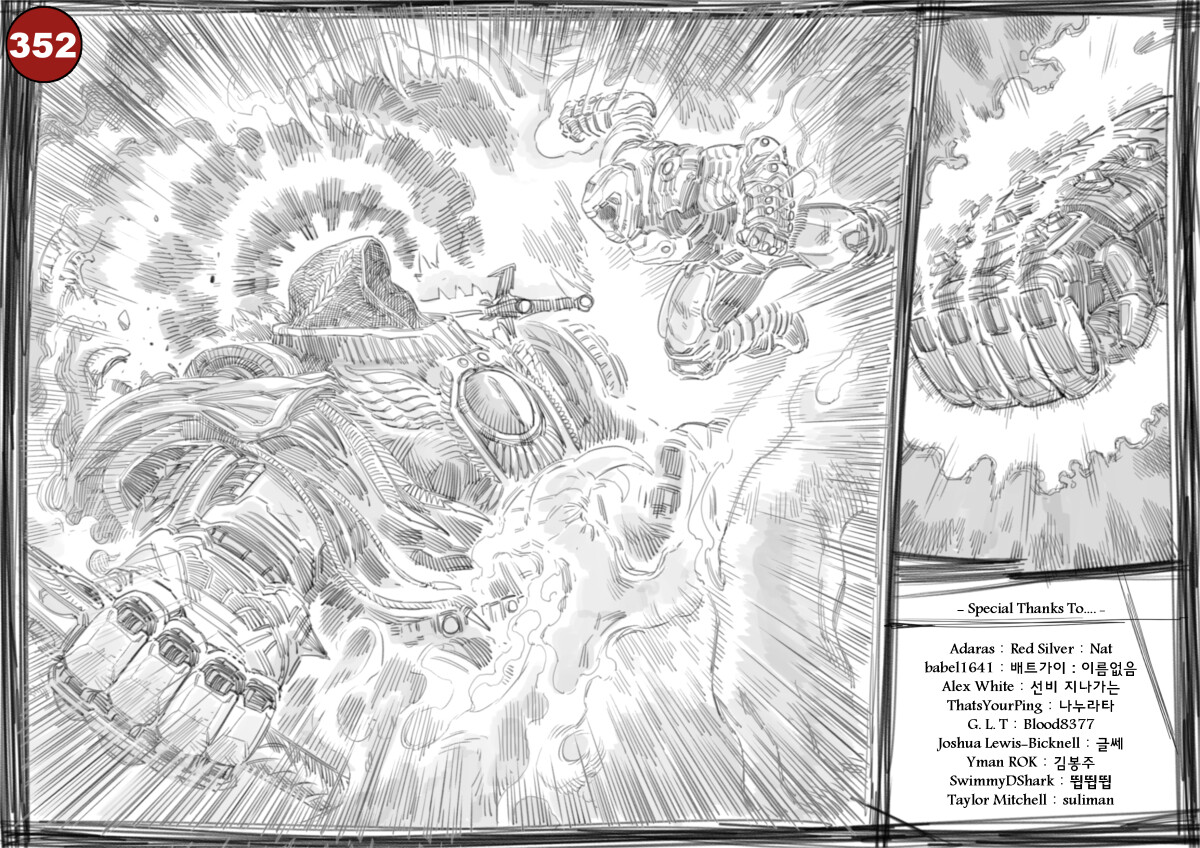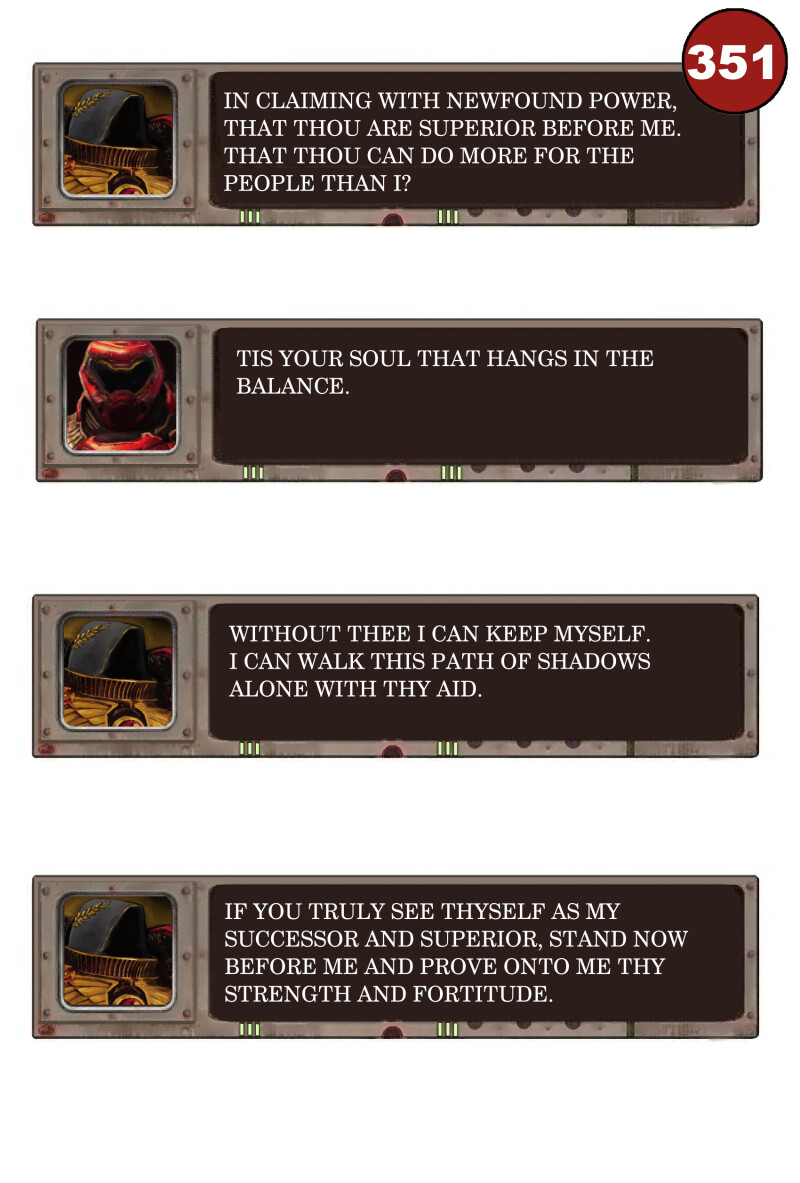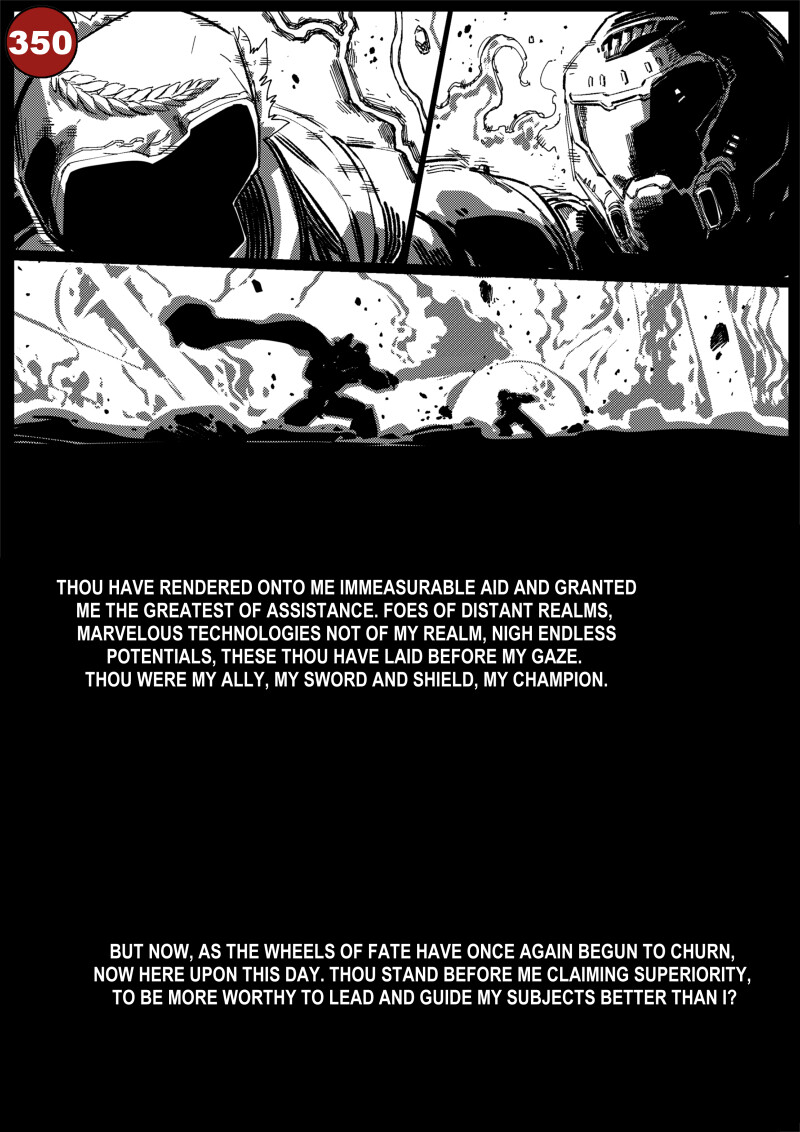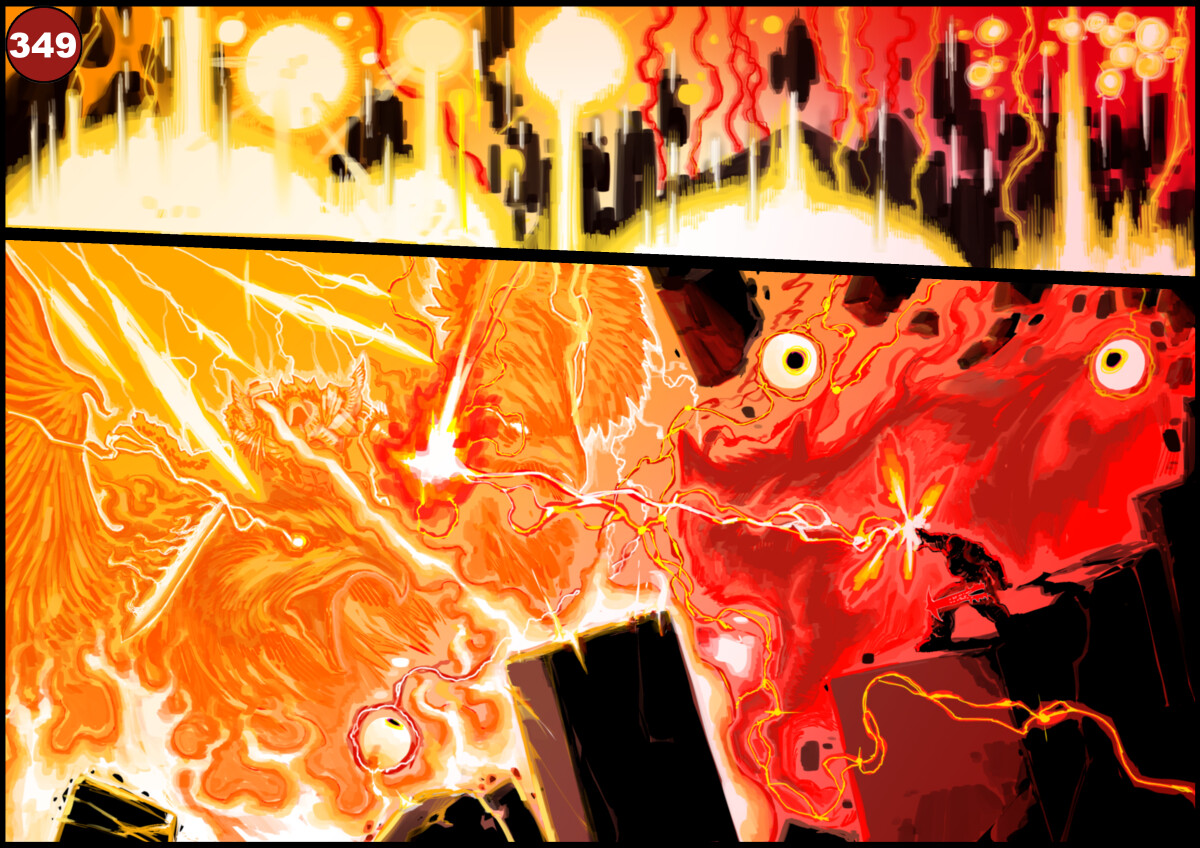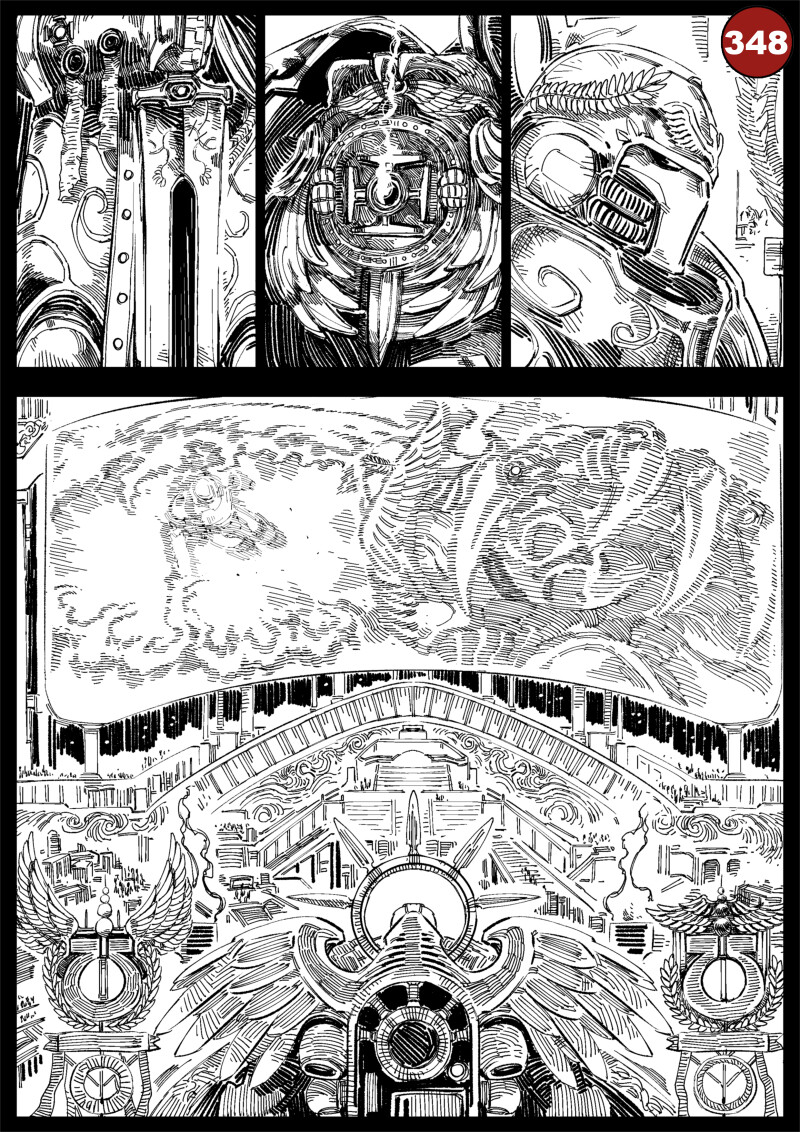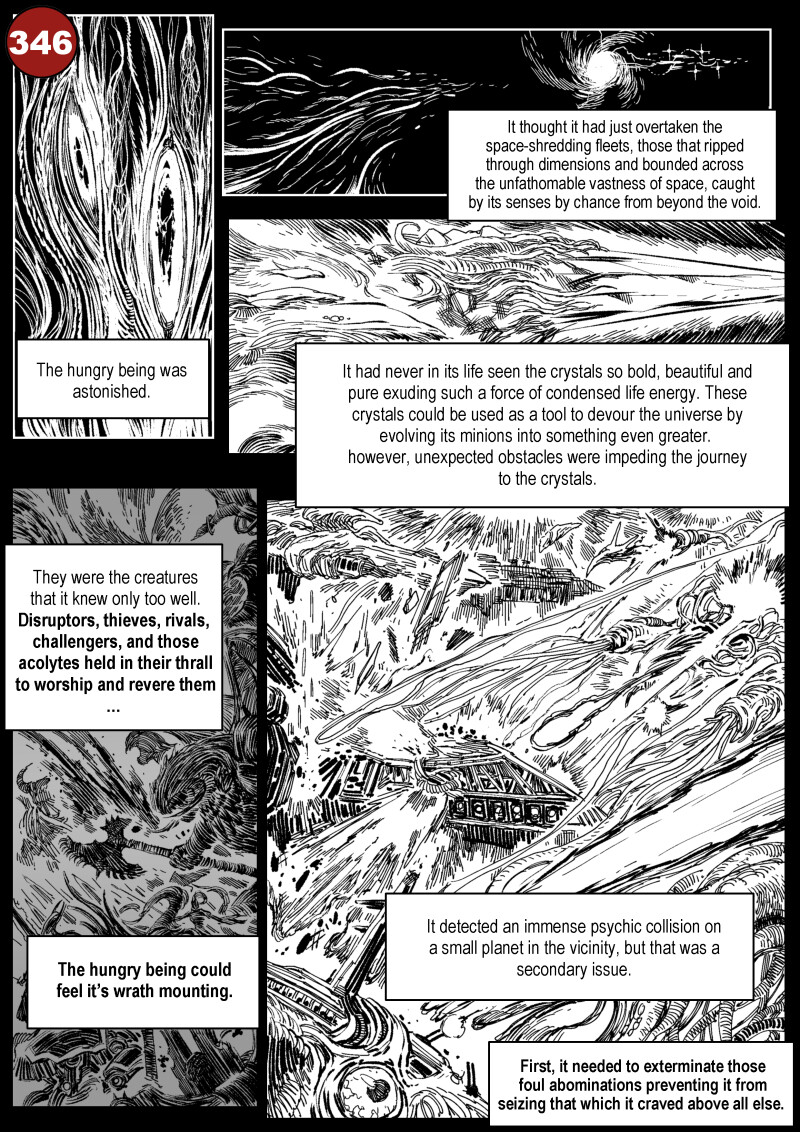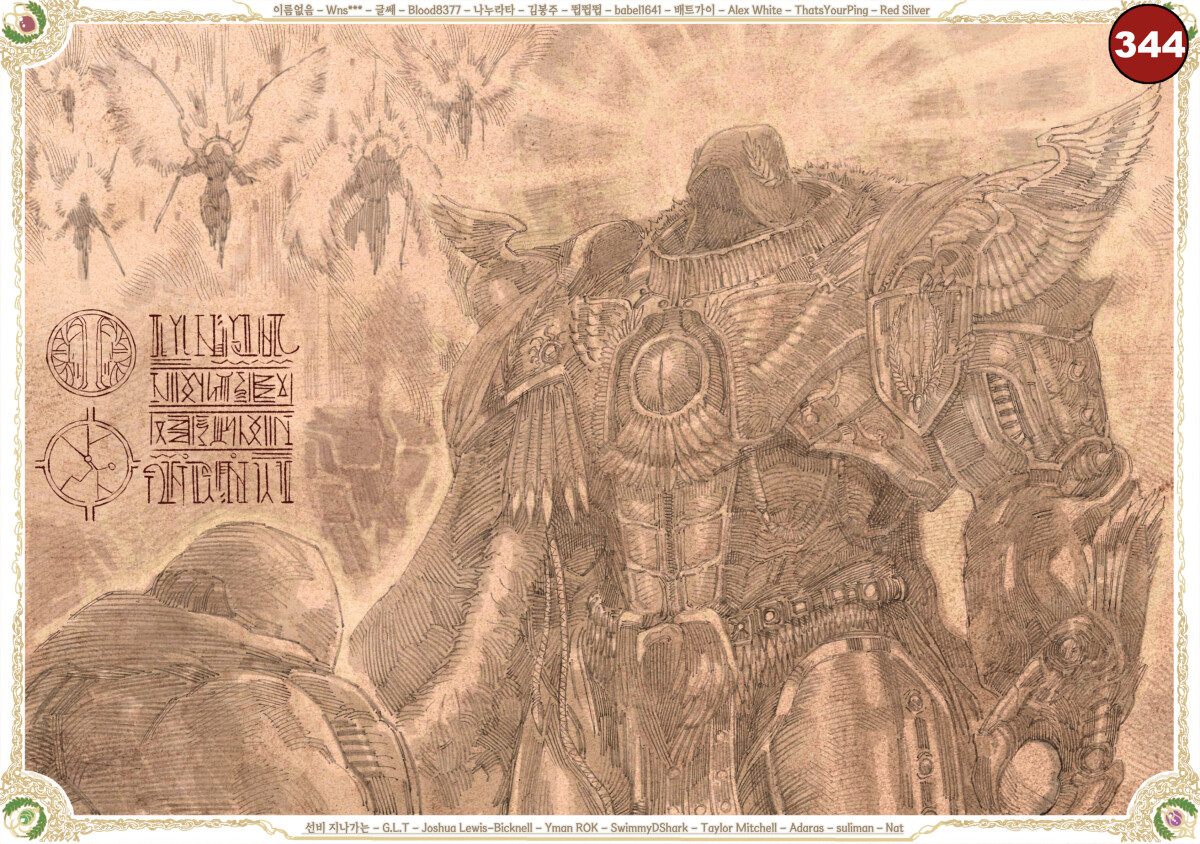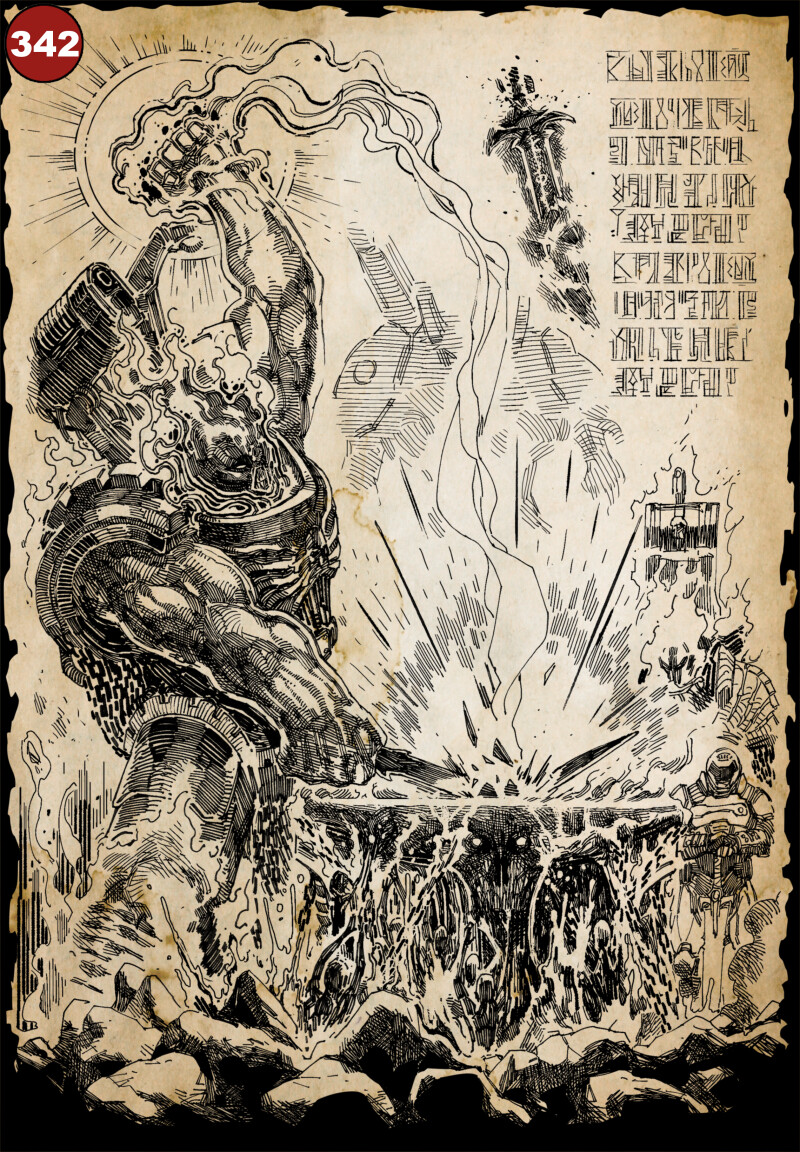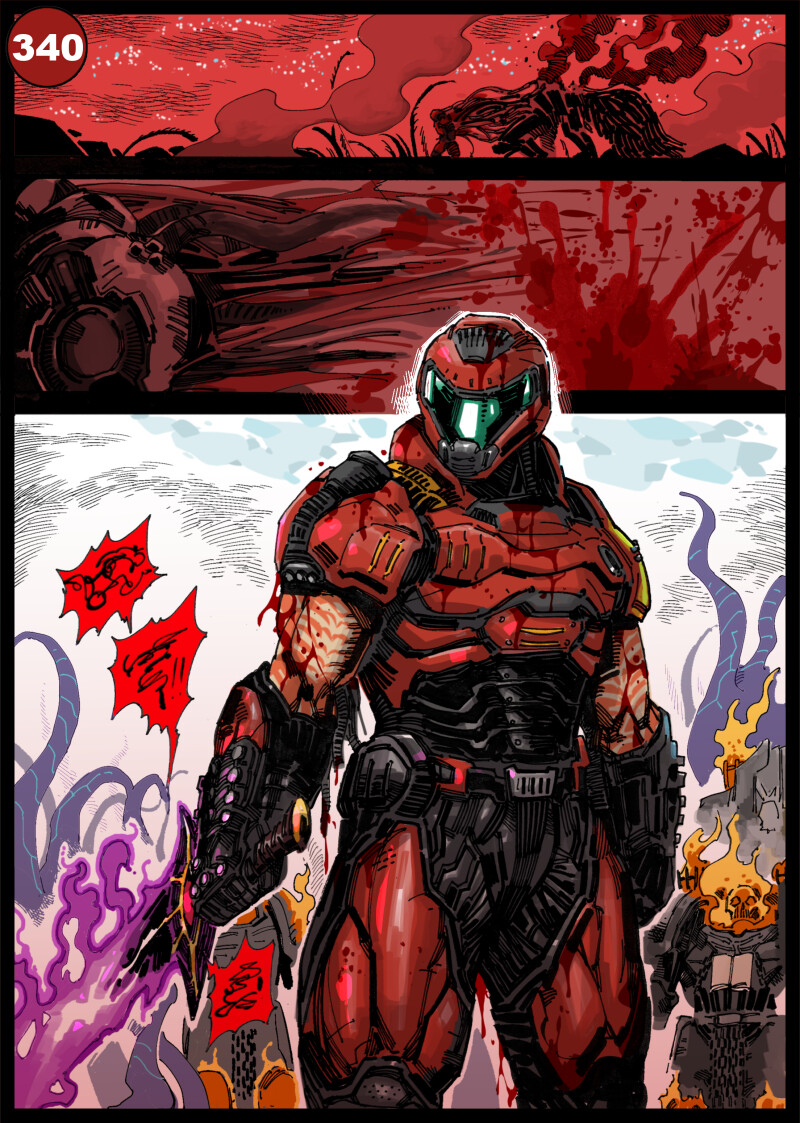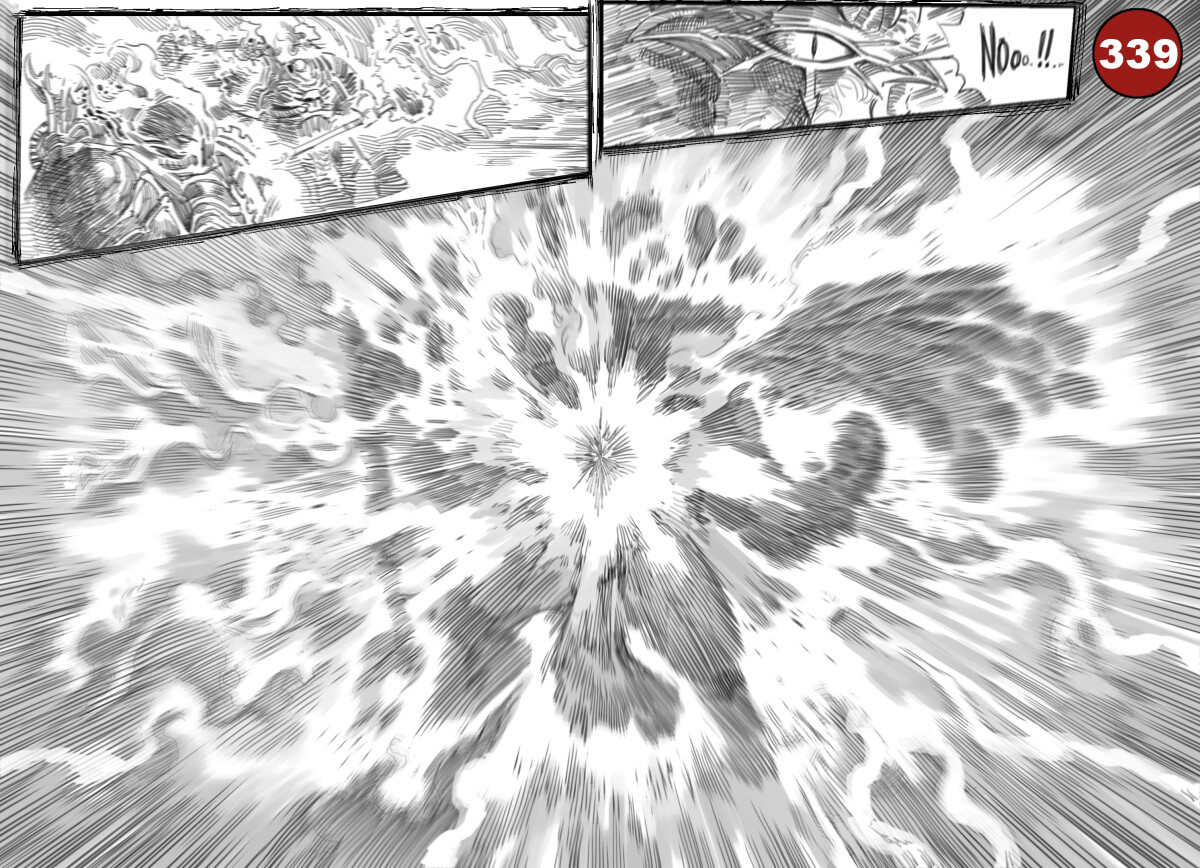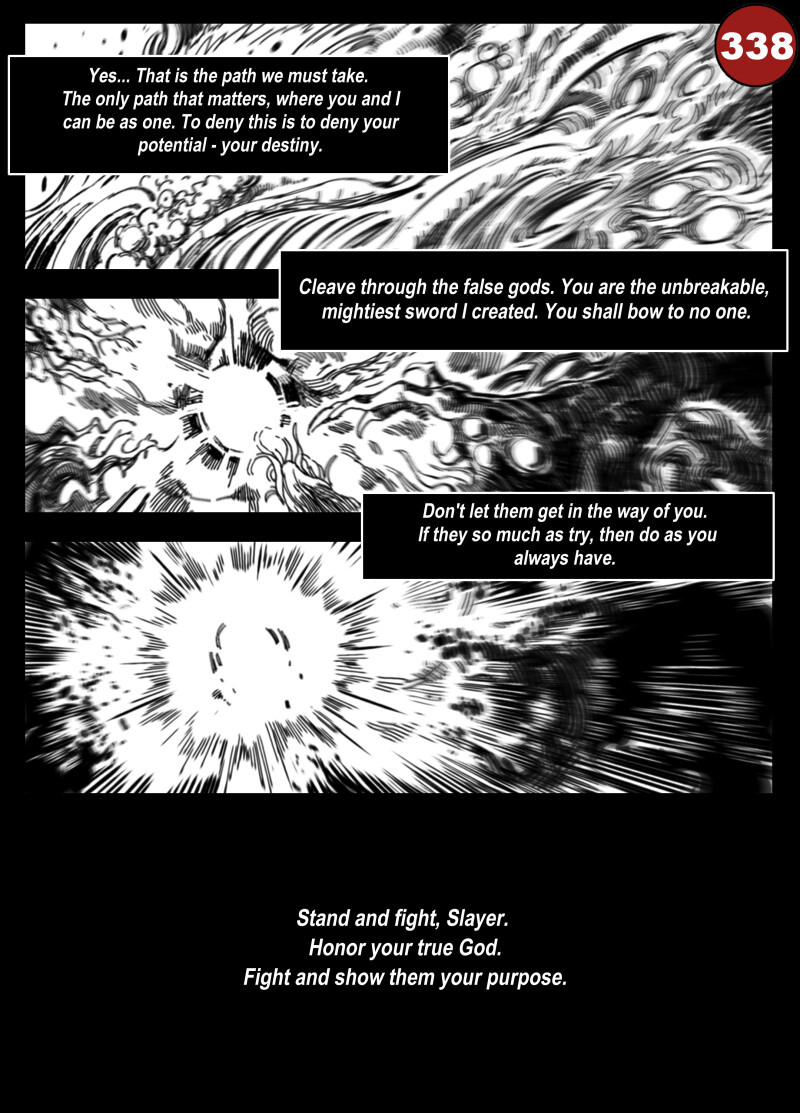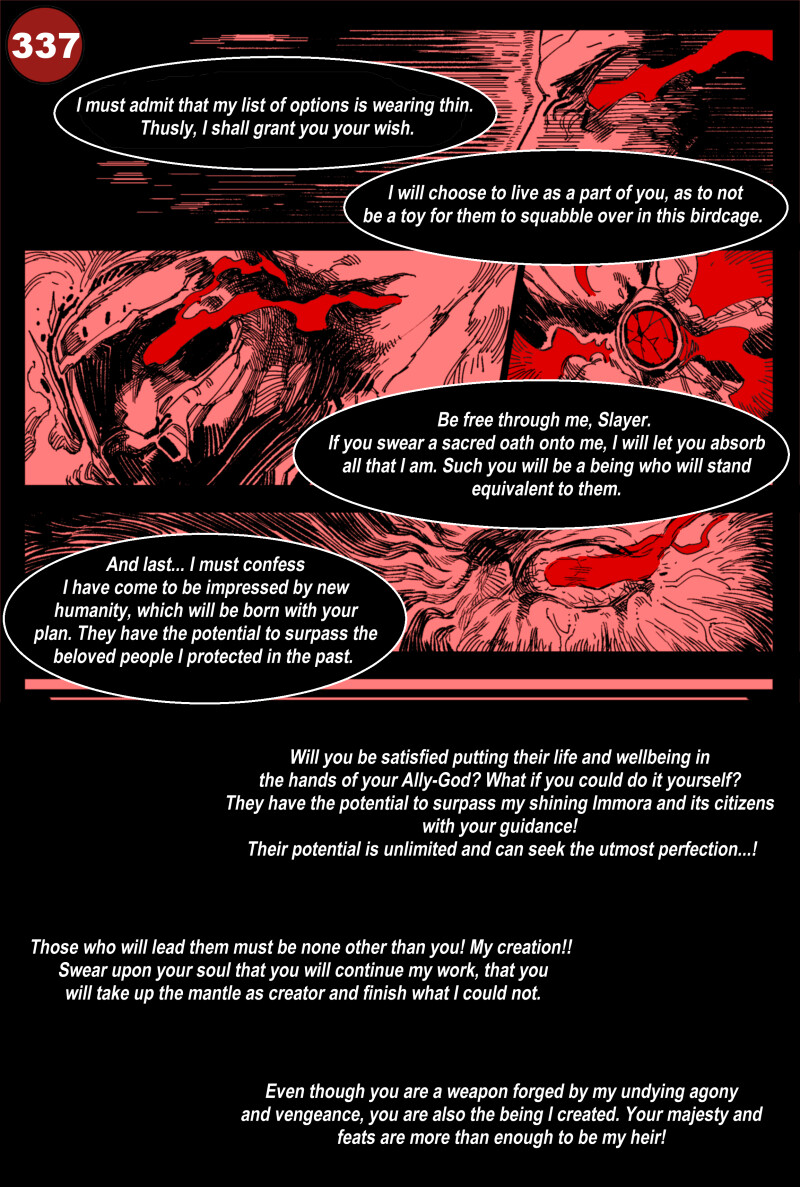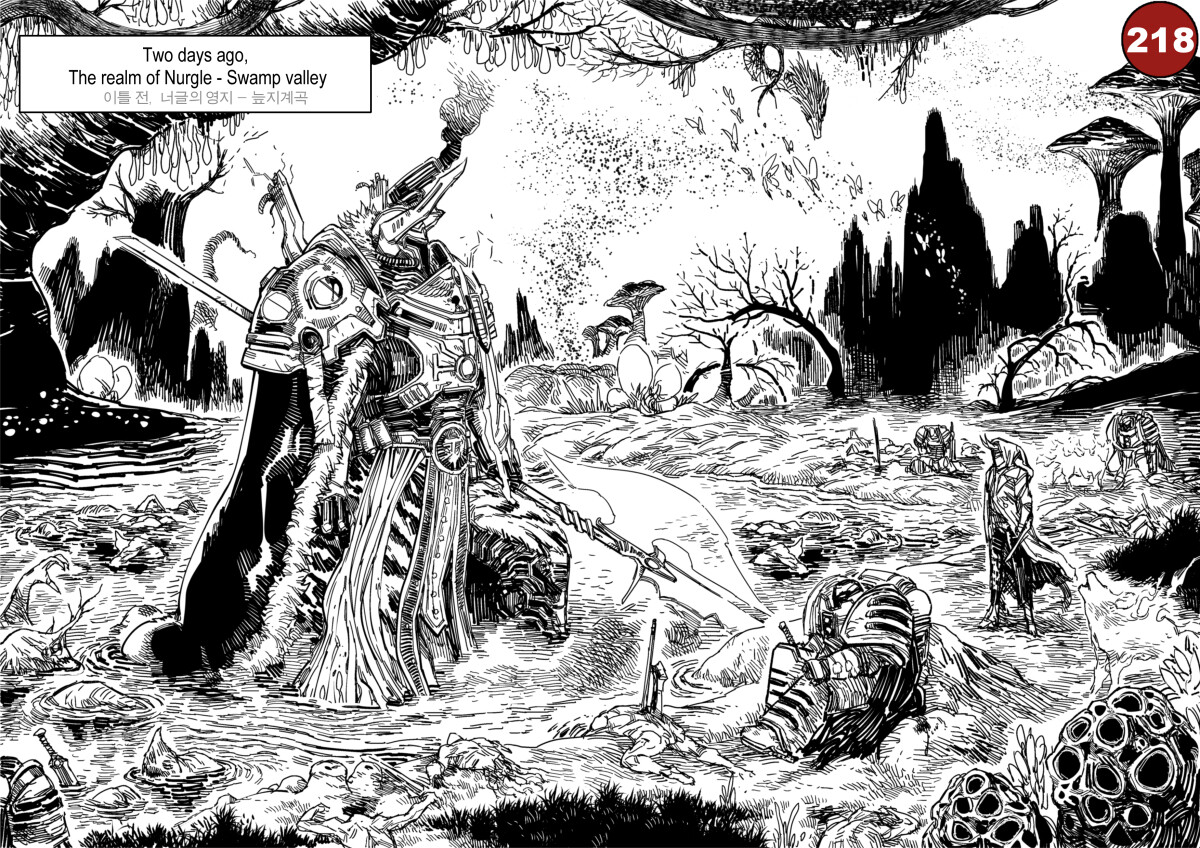
Sentinel Knight in the Mire of Nurgle
The Mire of Nurgle
This monochromatic illustration from the comic “If Doom Slayer joins the Imperium of Man” sets its scene in the grotesque realm of Nurgle, specifically in a place labeled Swamp Valley. The land oozes with decay and putrescence, characteristic of the Plague God’s dominion. Towering fungal growths loom in the distance while pools of rot and festering filth bubble in the foreground. At the center stands a Sentinel Knight—hulking, noble, and utterly still—his solemn presence dominating the tainted landscape like a statue of defiance. His armor, though clean and polished, appears almost solemnly out of place against the backdrop of infection and entropy. The Knight’s polearm glimmers faintly even in the stark linework, suggesting that purity and order have not yet bowed to the corruption.
Fallen Brothers and a Harlequin’s Vigil
Around the Sentinel Knight lie the fallen or kneeling forms of other armored warriors—more Sentinel Knights—exhausted or wounded by the poisonous atmosphere of Nurgle’s realm. Each one seems drained, perhaps not just physically but spiritually, worn thin by prolonged exposure to the rot’s corruptive aura. Their armor is detailed with grooves, scratches, and ornamental filigree that hints at their valor and purpose, now dulled by the creeping futility of their surroundings. Amid them stands a tall, cloaked figure—Chemos, the Aeldari Harlequin. His presence is enigmatic, neither enemy nor entirely ally, watching with a mix of aloofness and curiosity. The Harlequin’s light-footed stance contrasts sharply with the heavy stillness of the Knights, as if he belongs to a completely different layer of reality.
Symbolism and Stillness
This page radiates a heavy atmosphere of quiet tension and surreal dread. The trees droop with decay, yet there’s a strange sense of calm, as if the swamp itself has accepted its fate and now waits for the next trespasser to suffer the same. The number 218 in the upper right and the narrative box labeling the time and place add to the sense that this is part of a broader journey—perhaps the prelude to a confrontation or the aftermath of one. Despite the absence of immediate violence, the image is thick with narrative weight, drawing on the viewer’s understanding of both Nurgle’s corruption and the Knights’ sacred duty. The Sentinel Knight in the foreground seems almost contemplative, as though he carries the burden of all those around him. This scene speaks to the grim endurance and unbreakable resolve that define the Imperium’s champions, even when surrounded by hopeless rot.


